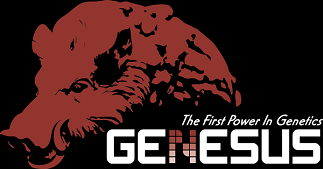



Demand is a key driver of sustainability and profitability for any industry. New and repeat customers are needed to maintain and grow product demand, and the pork industry is no exception. A high-quality product that provides an exceptional consumer eating experience leads to a high probability of repeat purchases. As an industry, we should prioritize producing such a product, one that the consumer demands rather than one with which the consumer isn’t fully satisfied. Successfully doing so may depend on the product the industry currently can supply, and the perception of what it will take to produce the desired alternative.
Tenderness and juiciness are two factors that drive consumer satisfaction (Lee et al., 2012). The amount of marbling is a component trait of these sensory attributes (De Vol et al., 1988). The industry perception of higher quality, higher marbled pork carcasses is that it is associated with the trade-off of lower pig performance and resultant higher production costs. This trade-off in performance has also been communicated by companies that breed separately for ‘commercial’ -type and ‘meat quality’ -type breeding populations, where the difference between them is largely due to carcass fat content, and the production inefficiencies that accompany higher fat accretion compared to lean (de Lange, 1998). A trade-off would certainly be present in a scenario that ignores one trait or the other. However, in a breeding program that emphasizes both quality and performance simultaneously, is a trade-off still to be expected?
In its breeding program, Genesus has and continues to focus on creating a market pig that has a competitive cost of production with accompanying desirable pork quality. This is successfully accomplished through simultaneous measurement and selection for increased marbling and reduced backfat, along with other key traits that combined, have an impact on pork quality, FC, and cost of production. This breeding goal has been in practice for over two decades and is the science behind the Jersey Red Duroc of today.
So is this trade-off observed in the Genesus Jersey Red Duroc breed? By reviewing phenotypic data in Duroc gilts with both individual feed intake and carcass phenotypes, we can evaluate this perceived difference. The dataset with the above-mentioned overlapping criteria consisted of 1,304 Duroc gilts. Displayed in Table 1, phenotypic correlations are low, suggesting a low association with average daily feed intake (ADFI), average daily gain (ADG), and feed conversion (FC) [computed in the last 8 weeks of finishing] with carcass marbling score. Contrary to perception, ADG and FC show favorable associations with increased marbling, although limited in magnitude.
Table 1. Phenotypic correlations and regression results between carcass marbling score and late-finishing individual feed intake traits. 1,304 Duroc gilts with both carcass and individual feed intake phenotypes.


The phenotypic relationship between FC and marbling is also shown in Figure 1, with the blue regression line and equation reflecting the average change per unit of marbling score, and supporting the weak statistical associations indicated in Table 1.
Figure 1: Phenotypic relationship between subjective marbling score and FC (feed:gain) in late finishing.


Genetic and phenotypic relationships between traits can be different. From a selection standpoint, the genetic correlations between traits are what is important, and they are a required component in genetic evaluations to make targeted genetic progress in the traits of interest. Estimates of these relationships in the Jersey Red population indicate marbling is again lowly correlated with ADFI (0.17) and growth rate (days to 265 lbs) (-0.12). What this means from the standpoint of correlated response to selection, is that moving 1 point higher on the subjective marbling score scale (scale 1-6) equates to favorable changes in finishing performance (Table 2).
Table 2. Expected response to selection in key performance traits from the indicated change in subjective marbling score.


Based on the Genesus Jersey Red Duroc breeding program, it can be expected that the quality-production cost trade-off would be smaller or nonexistent in the Jersey Red Duroc. Therefore, moving toward higher marbling doesn’t equate to poorer performance and increased cost. Genetic selection for increased marbling in Jersey Red Duroc is lowly but desirably correlated with faster growth and has an inconsequential relationship with FC. By measuring these component traits of pork production, gains can be made toward higher profitability and desirability.
References:
De Lange, C.F.M. 1998. Understanding Lean Growth: An Overview. https://www.nationalhogfarmer.com/
De Vol, D.L., McKeith, F.K., Bechtel, P.J., Novakofski, R.D., Shanks, R.D. and Carr, T.R. 1988. Variation in composition and palatability traits and relationships between muscle characteristics and palatability in a random sample of pork carcasses. J. Anim. Sci. 66 (2): 385-395.
Lee, S. H., J. H. Choe, Y. M. Choi, K. C. Jung, M. S. Rhee, K. C. Hong, S. K. Lee, Y. C. Ryu, and B. C. Kim. 2012. The influence of pork quality traits and muscle fiber characteristics on the eating quality of pork from various breeds. Meat Sci. 90:284-291.







